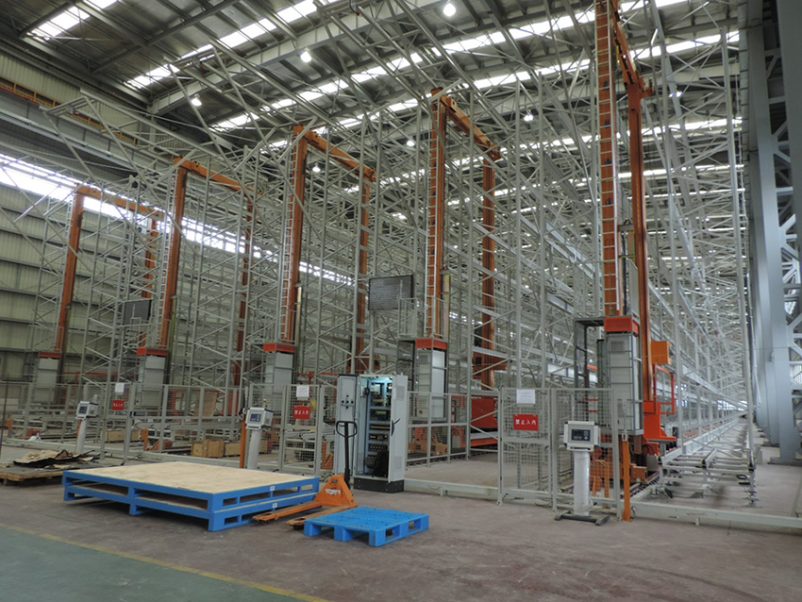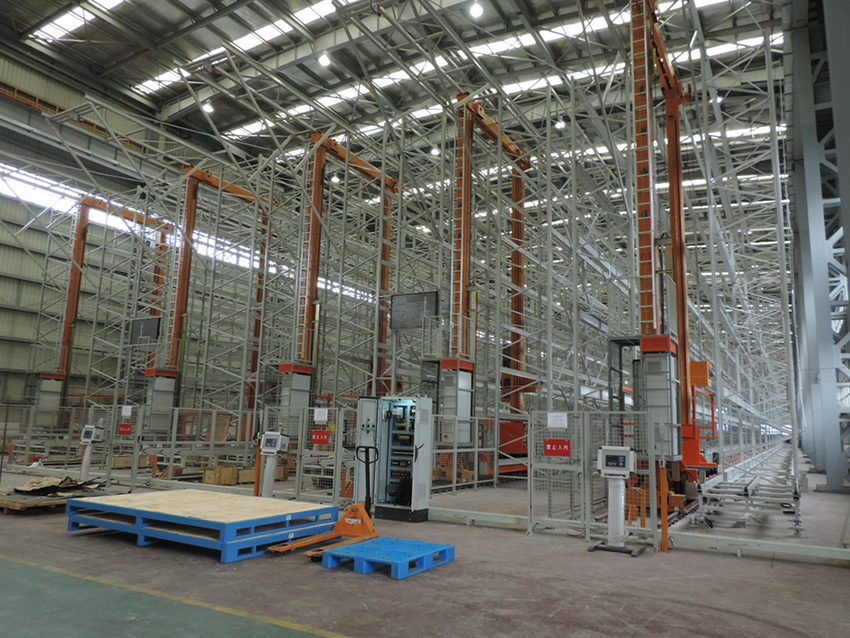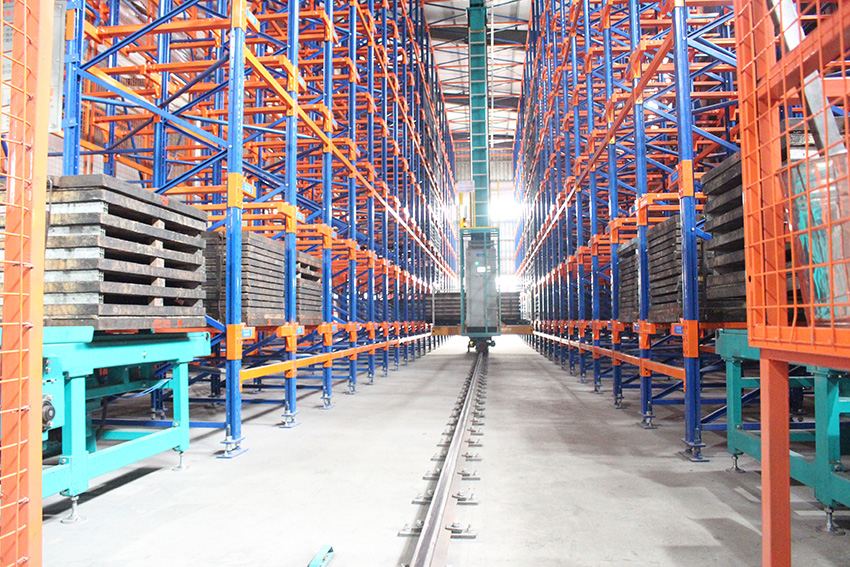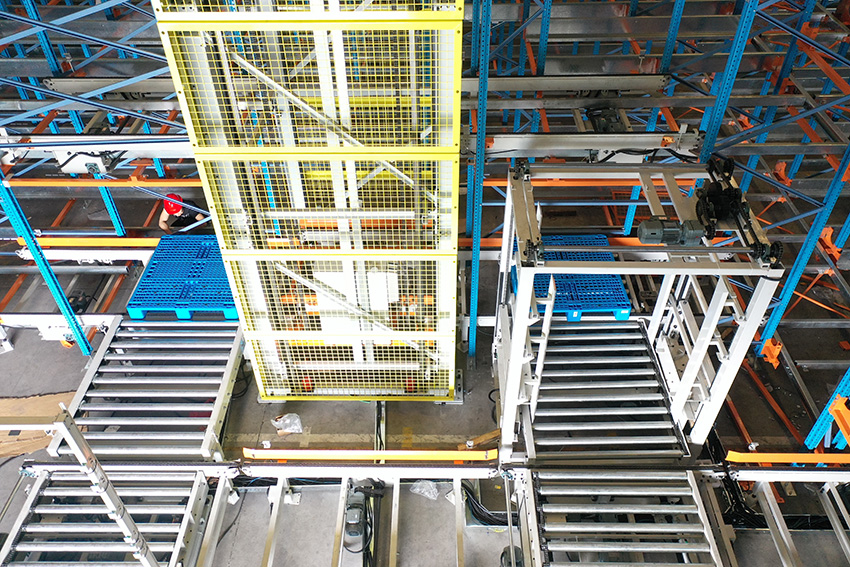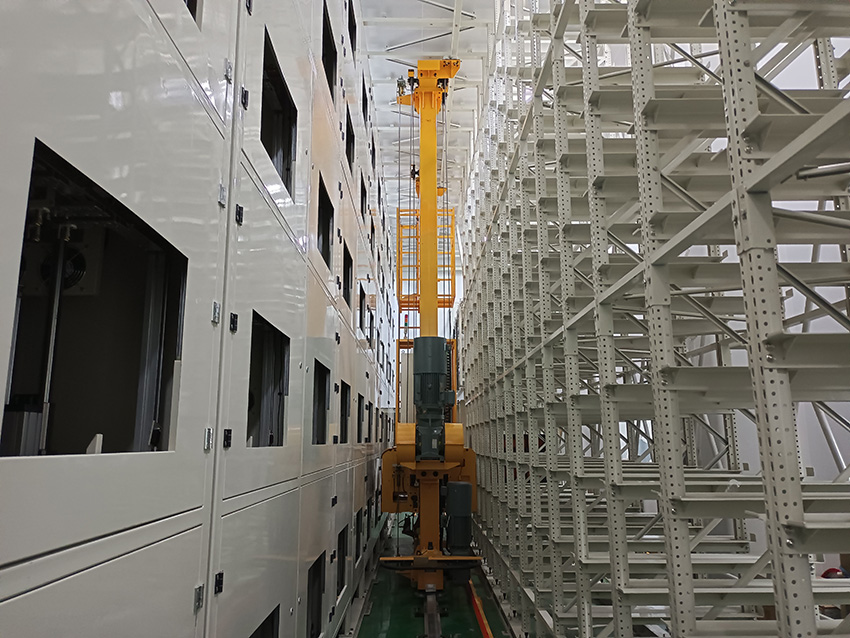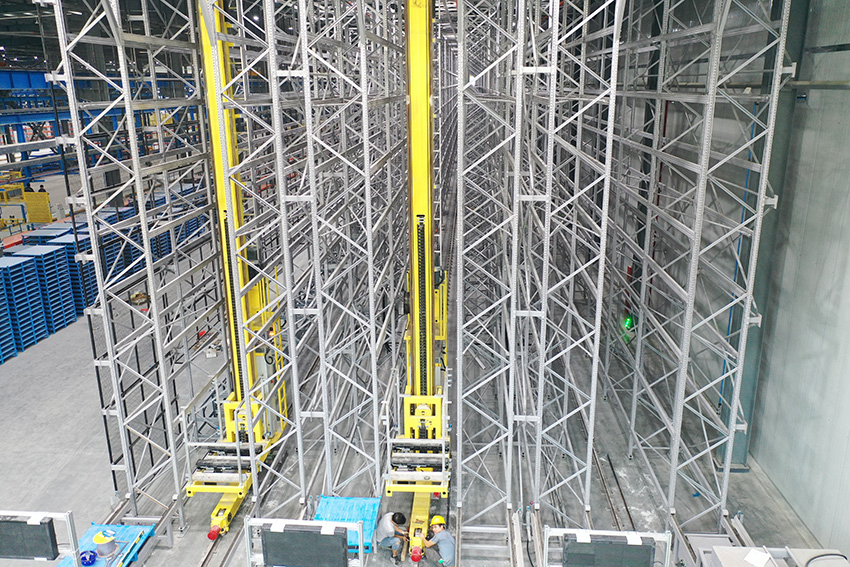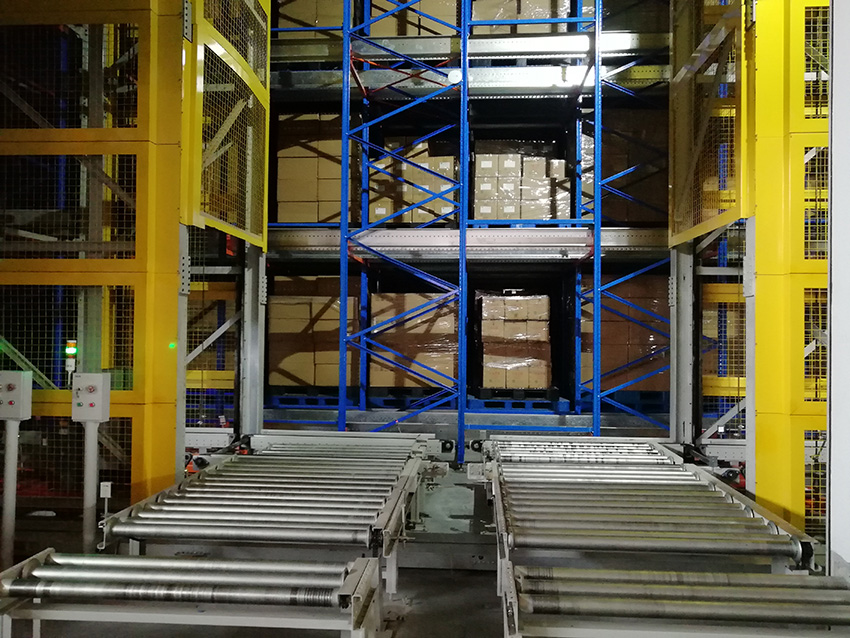1. Project Background
Customer Requirements: An international shipping group needs to build a smart Three-dimensional warehouse to meet the following requirements:
Storage Requirements: Over 1,000 SKUs (including containers, bulk cargo, machinery, and hazardous materials), supporting mixed storage of containers (dimensions: 12m × 2.4m × 2.6m, weight: 20–40 tons), bulk cargo (e.g., coal, ore), and precision instruments;
Efficiency Goals: Average daily order processing of 8,000 orders, with a peak throughput capacity of 20,000 tons per day;
Compliance Requirements: Rust and corrosion prevention (humidity ≤50%, surface coating protection), fire and explosion prevention (hazardous materials stored in designated zones), compliant with ISO 9001 and IMO (International Maritime Organization) standards;
Cost Optimization: Reduce reliance on manual labor and lower cargo damage rate to below 0.1%.
2. Technical Highlights
Heavy-duty cargo adaptation design:
The stacker forks are made of box-type steel structure (thickness ≥ 20 mm) with a load capacity of up to 10 tons, and anti-vibration sensors monitor the handling process in real time.
Container rack shelves are equipped with anti-slip rubber pads and elastic limiters to prevent container slippage.
Precise Environmental Control:
The hazardous materials storage area is equipped with an inert gas fire suppression system (heptane), with a response time of ≤30 seconds;
Anti-static racks (surface resistance ≤ 1×10⁶Ω) prevent static discharge damage to precision instruments.
Efficient Sorting Strategy:
WMS consolidates batches based on route requirements (e.g., container + bulk cargo orders for a specific port), reducing stacker crane operations;
AGVs operate in multi-vehicle collaboration mode, improving cross-zone transportation efficiency by 50%.


